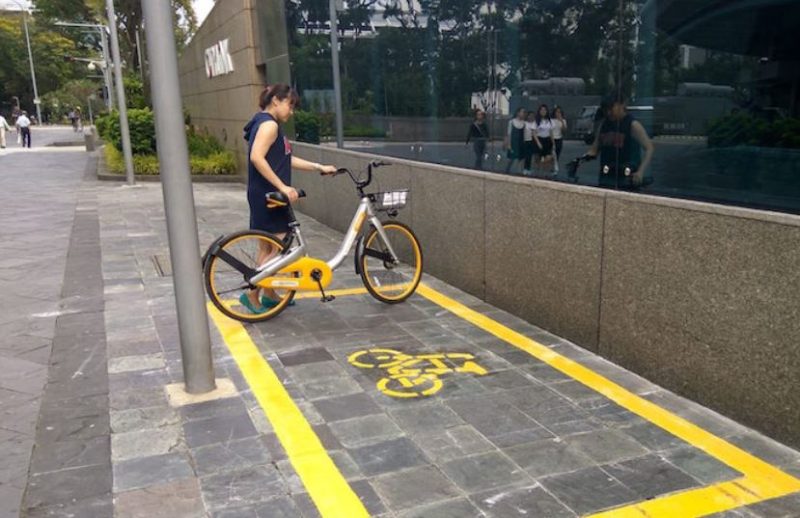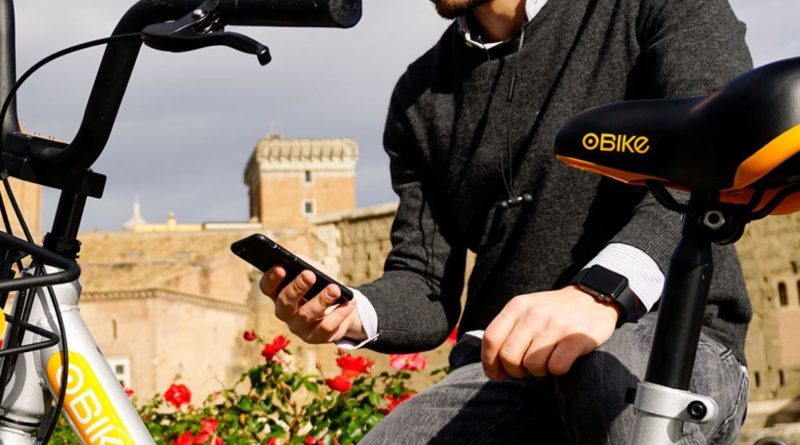What makes a successful bike share scheme? Sustainable transport NGO studies the recipe
Research by the Institute for Transportation and Development Policy has drawn up a five point outline of what themes tend to deliver a successful bike share scheme.
Badging the proliferation of bike share as ‘disruptive’ in too many cases, the sustainable transport org has studied the dockless schemes in 15 cities in 5 continents to draw its five best practice conclusions.
“Dockless bikeshare has a reputation for being a ‘disruptor,’ but that’s not necessarily what people need,” said ITDP Senior Research Associate Dana Yanocha, who wrote the policy brief. “The best transit innovations—especially those that are privately operated—offer riders convenient, affordable options for getting where they need to go. Local governments that have viewed dockless bikeshare as an extension of their transit systems and introduced some form of regulation have seen ridership flourish as a result.”
 Guangzhou, one of the locations frequently in the media due to the large number of discarded dockless bikes, has 57 bikes per 1,000 residents. This, according to the research, is too high a ratio, with levels between 10 and 30 bikes per 1,000 tending to prove more successful. Dublin, with its 13 bikes per 1,000 residents and pioneering approach to regulation, is cited as an example worth highlighting.
Guangzhou, one of the locations frequently in the media due to the large number of discarded dockless bikes, has 57 bikes per 1,000 residents. This, according to the research, is too high a ratio, with levels between 10 and 30 bikes per 1,000 tending to prove more successful. Dublin, with its 13 bikes per 1,000 residents and pioneering approach to regulation, is cited as an example worth highlighting.
Over 1,000 cities around the globe now offer some form of bike share, though schemes vary wildly in their success. In Singapore, Mobike earlier this week reported that it had helped the city double cycling’s modal share. Meanwhile, dockless schemes in Shenzhen, China have replaced an estimated 10% of car journeys and 13% of gasoline consumption.
According to ITDP, the five elements that can make or break a dockless system are:
- Integration with Transit—Lowering barriers to biking—by requiring that operators provide flexible and reduced payment options, facilitating transit fare integration, and ensuring an equitable distribution of bikes—connects dockless systems to a city’s mass transit network, extending its reach.
- Data Sharing Requirements—Real-time data on the location of every dockless bike, as well as aggregated trip and other operations data, should be shared at the request of local governments. Usership and route patterns provide insights on infrastructure needs, and real-time data is critical for monitoring and enforcement of city regulations.
- Public Space Management—Fleet size caps, time-bound responses to parking issues, lock-to requirements, and designated parking areas can prevent bikes not in use from cluttering the streetscape.
- User Protections—As with docked bikeshare, cities should require dockless operators to clearly display safety information, meet equipment and insurance standards, and act responsibly with regard to user privacy, deposits and refunds.
- Dedicated Staff—For dockless bikeshare to work, cities must dedicate staff and resources to monitor operations and enforce regulations, evaluate performance, develop plans for improving bike lanes, and strengthen integration and connectivity.
“Bikeshare, as a transportation mode, is good for the environment and for public health,” said Fernanda Rivera, Director of Cycling Design and Culture for the Secretary of Environment of Mexico City – an early adopter of bike share. “But most importantly, this is an option that allows anyone, regardless of income, to get around town more easily. For any bikeshare, especially dockless, to be successful, it must meet this need. Improving commuting conditions is relevant when promoting non-motorized transport.”
As of 2018, Mexico City’s bikeshare has already reduced the city’s carbon dioxide emissions by an estimated 4,000 TonCO2eq—the equivalent of planting more than 11,000 trees.
Having recommended data-sharing with city planners in a bid to bolster infrastructure developments, Yanocha concludes:
“The one thing to keep in mind with dockless bikeshare is that this is still a recent innovation. In order to transition this innovation to an established, reliable service, cities need to step up and demand that private bikeshare operators share their data and comply with other requirements that preserve public space and protect users. If operators don’t want to work with cities to meet these standards and provide a high-quality service for users, then cities should consider looking at alternatives for providing bikeshare.”



